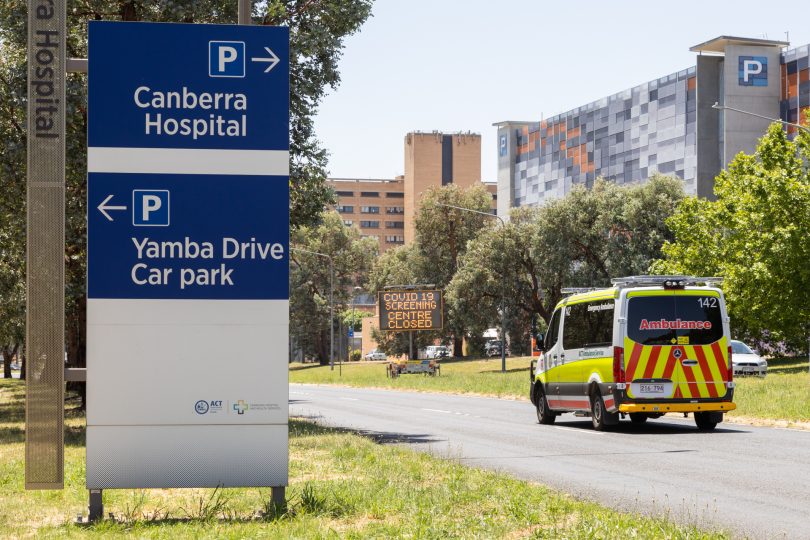
The ACT’s public hospitals have the longest wait times on average in the country, according to the AMA. Photo: Michelle Kroll.
The ACT has the worst emergency room wait times in the country, according to the Australian Medical Association’s Report Card 2021.
The AMA found a mere 34 per cent of urgent emergency department patients were seen within 30 minutes in Canberra public hospitals. The national average is 67 per cent.
For a decade, the ACT has consistently been the worst performing jurisdiction in this category.
The ACT was also the worst-performing state or territory in emergency department visits completed in four hours or less, the second-worst for median elective wait times, and experienced a significant fall in the percentage of category 2 elective surgery patients admitted within 90 days, falling from 75.3 per cent last year to 64.1 per cent.
Secretary of the Australian Nursing and Midwifery Federation ACT Branch Matthew Daniel said the results represent a “sustained picture” of poor results over several years, which he finds frustrating given the amount of attention given by outside consultancies on these issues.
“What have those reports done to improve the situation? I’m not necessarily against these things being done by consultants, but if we continue to spend money on these sorts of things, then we need to see improvement,” he said.
Nurse-to-patient ratios are scheduled to begin in February next year in the ACT and Mr Daniel believes these will improve patient outcomes.
“Short-staffing is a chronic problem, and I guess it would contribute in some way to performance results and certainly the patient experience,” said Mr Daniel.
Short-staffing is just one part of a system in need of revitalisation, he said. Other issues include rostering shortfalls and staff culture problems.
President of the Australian Medical Association (ACT), Professor Walter Abhayaratna, said that the ACT’s public hospitals are being placed “under immense pressure” despite a desire and willingness to do better.
“The ACT’s poor performance has been evident for a number of years, and it will take a number of years to turn it around. But we have to start somewhere and it has to start with a recognition of the problem and a desire to work together to fix it,” said Professor Abhayaratna.
The AMA supports increasing the Federal Government’s contribution in public hospital funding to 50 per cent, expanding capacity and incentivising performance targets.
Minister for Health Rachel Stephen-Smith said that the emergency departments have seen what she described as “really significant increases” in users in the last two years, admitting that hospitals are stretched at present. She highlighted the $23 million funding set aside in the ACT budget for Canberra Hospital’s emergency department over the next four years.
“That’s more doctors, more nurses, more allied health professionals and, importantly, the establishment of an acute medical unit,” said Ms Stephen-Smith.
She said the ACT Government is currently pushing for an increase in Commonwealth investment for local hospitals.
Shadow Minister for Health Giulia Jones said Commonwealth funding for the ACT health system was at its highest levels since 2008-9, while ACT Government funding is at one of its lowest.
“This Labor-Greens Government blames everyone else for its own failures, but after 20 years, there is no one else to blame.
“The AMA rightly notes that the doctors, nurses and frontline healthcare workers — who have responded tremendously during the COVID-19 pandemic — are frustrated by the Labor-Greens Government’s continued failures that make it harder and harder to provide the quality healthcare the community expects,” Ms Jones said.





















